Putting Your Best Skein Forward: Tips for Preparing Skeins for Fair Competition
words and photos by Sue Meissner
You may be considering entering a skein in the handspun competition of a fair, but you may not know how to enter. Or you may have entered but did not have a pleasing outcome. Let’s talk about how to put your best skein forward – not in terms of technical spinning but the very basics of getting your handspun skein pleasantly noticed by the judge. These top 5 tips will improve your chances even before the judge looks at your twists per inch.
Read all the entry rules for the handspun category
Each fair publishes its own entry or program book. These list the entry classes or categories for fair submissions, and in the thick, small font books, it can be easy to get overwhelmed by unfamiliar terms. For county and state fairs in the U.S., the 2 broad entrant divisions are 4-H and Open Class, though actual nomenclature could be different from state to state. Unless you are entering under the county youth agriculture club, you will be considered Open Class, a catch-all for anyone not in 4-H. If you are a youth but not in 4-H, you too can enter under the Open Class division.
Handspinning may take a bit of searching to find in the program book as it may be a subcategory under Needle Arts or Fiber Arts. Getting the correct category or class number is important. You must know the specific competition number in order to enter. You could lose valuable points or even be disqualified if you do not enter the correct competition class number. Double check or have the entry fair official verify you are submitting the correct item in the correct class number. Fair officials and judges are not allowed to correct tag entries once submitted.
Next, carefully read the rules for handspun skein entries. Rules may be revised with updated requirements. Competitions may have very specific rules on weight, yardage, ply, fiber content, tie up, number of skeins per class, accompanying material, and label requirements. Be sure you read every word, and check the next page as rules may carry over. It is up to the entrant to have read and complied with the published rules.
Submit your best yardage
Each competition should have printed rules on yardage or weight required. Read these carefully. A search of 5 state fair competitions listed ranges of 1-oz to 2-oz skeins depending on the actual entry requirements for that particular class. Why fixed lengths or weights? Judges need to see a certain length of yarn to properly evaluate. And if the skeins of a particular class are set side by side, it makes judging easier as the skeins are approximately the same size.
Some spinners are so thrilled with their bobbin full of yarn that they feel they should submit every inch. That is not required. Choose the best continuous length of yardage that meets the minimum requirement. It is common for the first yards and final yards to differ from the center section. Chop off those uneven, lumpy beginning and ending yards and keep the best continuous center section. Always put your best yardage forward.
Present skeins well
One of the most important things you can do is to present a beautiful skein. That means well tied and labeled according to the rules. Some fair books are explicit about the length, weight, or tie up of the skeins. Even if entry books are vague, skein presentation follows some basic conventions.
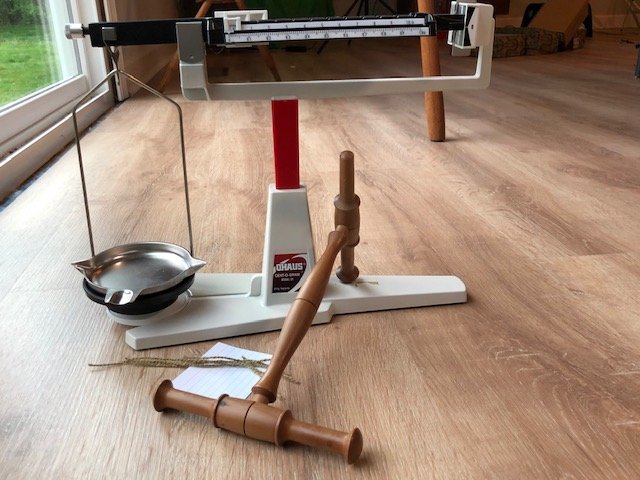
Some fair entry rules require 1- or 2-yard wound skeins. To achieve this, be sure your niddy noddy measures a standard length. Use a tape measure and wind around as if you were winding your yarn. My first niddy noddy measured 54 inches. I decided to invest in 1-yard and 2-yard niddy noddys. If you are required to submit in metric, use a metric niddy noddy.
How do you know which length to use? If the competition rules specify, apply those. A general rule of thumb is to use a niddy noddy of sufficient length for the type of yarn and yardage or weight required. So, for a 1-oz laceweight, I would probably use the 1-yard niddy noddy. For thicker worsted yarn, I would reach for a 2-yard winder. Basically, what I want is to make sure it will not look too thin nor too thick as a skein.
Some competitions may emphasize weight minimums. Be sure to pre-weigh your entry skein at home. Yes, some judges do weigh if they suspect the minimum weight was not submitted. Yet overly heavy skeins with excessive weight will not win any bonus points.
Once the yarn is wound on the niddy noddy, be sure the ends and the yarn threads are secure. When you get to the end of winding on your best continuous length of yarn, be sure you secure the beginning to the end of the yarn with a little knot. That will make a continuous hank with no loose, dangling ends.
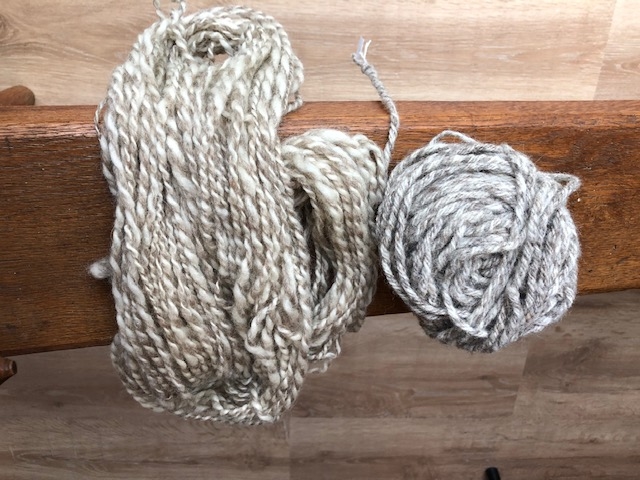
The figure 8 tie in 3–4 places is a standard tie up. This tie up is often specified in the entry book rules. Beginner spinners may have been encouraged to use a half hitch method whereby you take the final length of yarn and make a half hitch with the same yarn, but do not use this method for competitions. Your skein may be untwisted and examined closely and needs to hold up under that potential handling.
Finally, after you have measured out the required length and used an appropriate tie up, twist the skein until the ends meet. This helps with presentation and handling during competition.
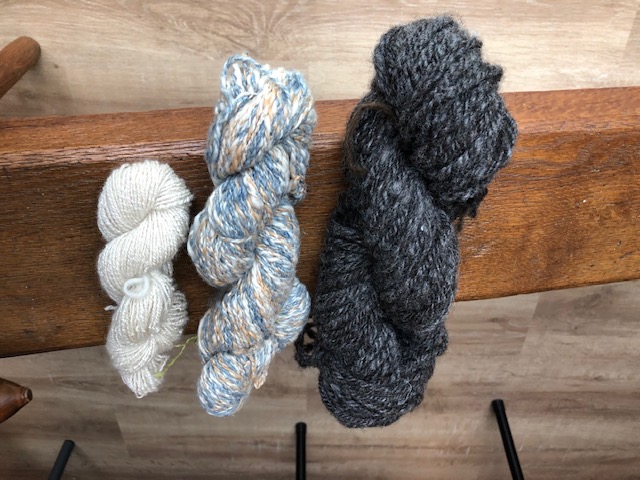
A beautifully tied and presented skein demonstrates the spinner understands the basics of skein tie up and presentation. And you want your skein to look as tidy and neat as possible to catch the judge’s eye. Yarn that fails to meet required length, weight, tie-up or presentation may easily be set aside by busy judges.
Note: Novelty yarns may only require a tied hank and not twisted upon itself. The rules may mention how specialty yarns should be presented.
Label skeins properly
A review of state fair guidelines shows most require not only the standard tag with class number but also information such as end use, which is what this yarn would be best used for. So a laceweight could be labeled “for a lace shawl.” It would not be labeled for a tote bag. Although this may seem obvious it shows that you the entrant understand an appropriate use for this particular yarn.
Moreover, you may be required to include other information such as ply, yardage, weight, fiber content and percentages, spinning method (e.g., worsted, woolen), or kind of spinning for novelty yarns (e.g., core spun, bouclé). Some of these may not be required but are good practice in my opinion.
Where should you put that information? My review of a few fair books says it may be written on the back of the entry tag. Other competitions specify a separate 3×5-inch information card attached to the entry tag or skein.
Supplemental submissions may also be required. For example, one fair required a 4-inch square knitted or crochet swatch along with the yarn. In such competitions, do not be surprised if your entry gets disqualified for not submitting the additional swatch requirement. Why would a swatch be required? Seeing how the yarn looks in a piece gives extra attention to balance, ply, and consistency as that yarn is used. It may also help judges scrutinize whether the yarn is truly handspun and not a commercially spun and relabeled submission.
States may promote “Made in X state” competitions that require other supporting documentation such as sales receipt from a state producer and/or submission of a staple of raw fleece. These additions help verify the fiber meets the class competition requirements. Special prize money has been set aside to promote state producers, and integrity of the stipulations needs to be upheld.
Other considerations
You have spun, tied, and labeled your skein beautifully, but it can still get disqualified. How? It was submitted under the wrong class number.
Why would this happen? Most competitions limit one skein per entrant per class. So, the entrant who really wishes to submit 2 skeins may submit the second into any other category. But a 2-ply 100% wool worsted spun skein does not belong in the alpaca/llama class, so choose the category appropriately.
In an effort to keep abreast with current spinning trends, fairs have revised and even expanded categories to encourage more submissions. There are unique categories for exotic fibers, plant fibers, camelids, and silks. There are entry categories for beginners, youth, or seniors. State-sourced fleeces and fibers are not unusual. Therefore, consider all the listed categories your skeins could be entered under. And if you have 2 skeins in mind, choose the category that best fits the skein, fiber, and your experience. Often the more specialty fiber or yarn categories have fewer entries, thus increasing your chance of winning.
Entering handspun yarn competitions can seem intimidating, but the above tips will make sure your skein is accurately and beautifully presented. Judges are human. They are under a lot of pressure to do a lot of work in a limited amount of time. One way to reduce that workload is to assign fewer points or even disqualify skeins that do not meet the printed requirements so their most valuable time can be used for actually judging the spinning.
It may seem weird to emphasize rules over the finished yarn. Isn’t a competition about judging spinning? Of course, but once the minimum requirements are met, that is when a judge brings out measuring tape, WPI tools, and linen counters for actual yarn scrutiny.
Much of a yarn competition is actually up to you. Simple attention to detail in terms of skein presentation and entry accuracy will put your best skein forward. Who knows, you could very well end up with Best in Show.
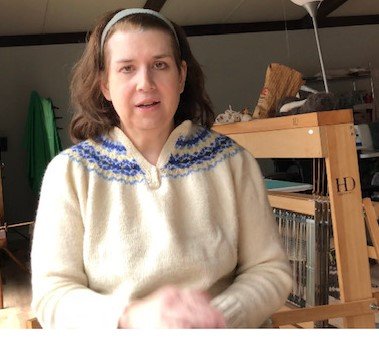
Sue Meissner’s fiber journey has led her to work through the Old’s College Master Spinner Program with her current thesis project spinning linen and metallic thread for 17th-century English bobbin lace. She has been a fair judge for several years and is in the process of opening a fiber arts shop called Nauvoo Fiber Arts in the 1840s tourist town of Nauvoo, Illinois. Her historical spinning chat and fiber arts tutorials are on her YouTube channel, Spinning the Past as well as on Facebook. And she is pleased to announce the imminent launch of a new historical handspinning/fiber arts podcast, The Spinner’s Craft.
PLY Magazine believes that Black lives matter, as well as LBGTQI+ lives. Those most vulnerable and persecuted in our communities deserve our love and support. Please be good to each other.


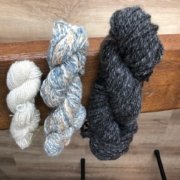


Leave a Reply
Want to join the discussion?Feel free to contribute!